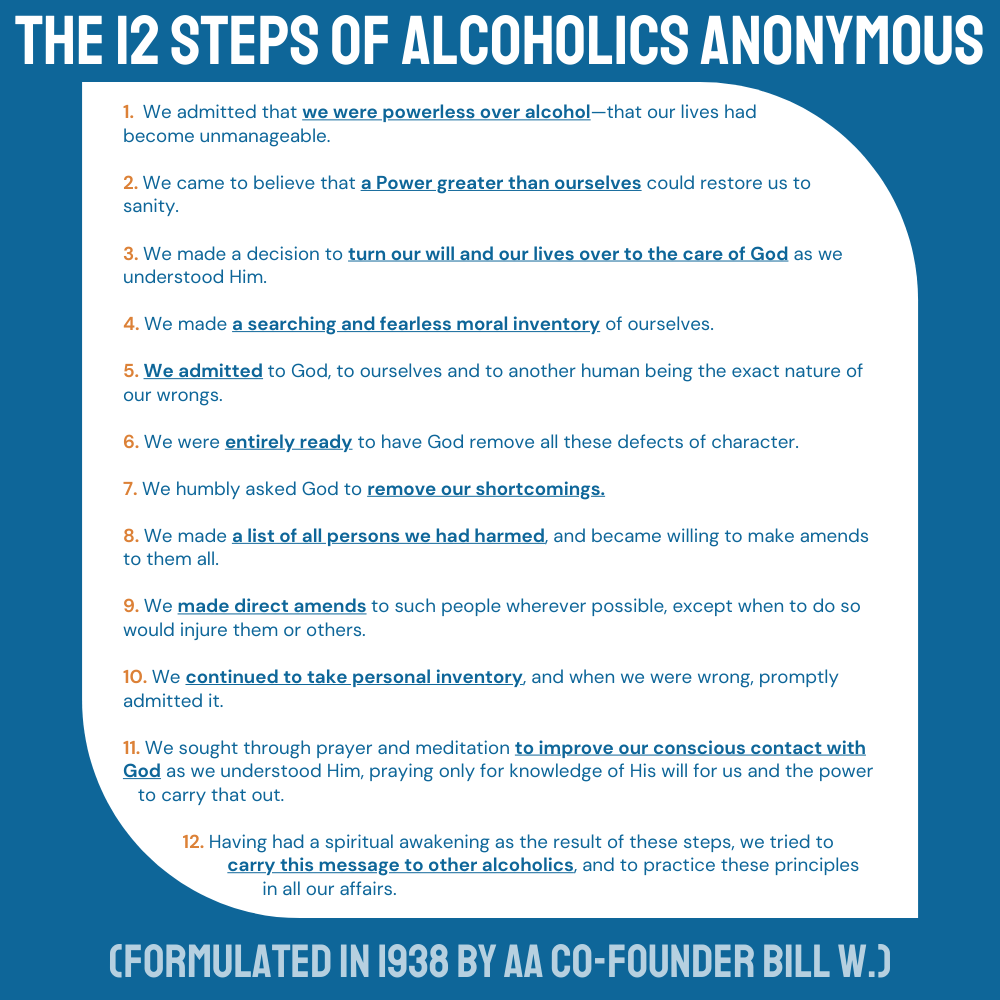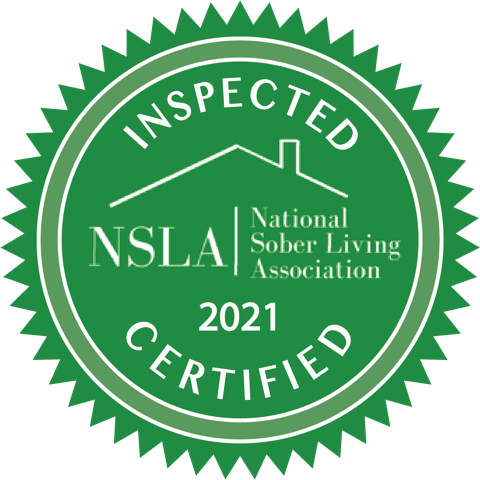You’ve likely heard of the “12 Steps of Alcoholics Anonymous” and “12-step-based addiction treatment.” Maybe you even know the “Steps” already. If not, please see the graphic below.
Rather than going into detail on the hows and whys of each Step (AA’s own publications, among other resources, have that well covered), this article will look at the general principles and purposes of the 12 Steps.

Principles and Goals of the 12 Steps
The 12 Steps are excellent tools for maximizing the effectiveness of long-term addiction recovery by:
- Understanding and facing up to personal weaknesses
- Taking responsibility for one’s actions, especially actions that have negative repercussions for other people
- Being willing to work toward improvement—and understanding that recovery is a lifelong process, not a problem to be solved and forgotten
- Accepting ongoing support and accountability from others (people who feel socially isolated—or are too proud to admit they can’t handle everything alone—are at high risk for relapse)
The primary goal of the 12 Steps is simple: give up an addictive substance or habit and stay free of it for a lifetime. Secondary goals, which vary from individual to individual, focus on building a purposeful future, avoiding temptation and staying close to a support network.
It is also important to understand what the 12 Steps are not. First, while spirituality is a core component of the process, this is not a program affiliated with any one religion. Instead, participants are asked to identify their own Higher Power, which will empower them in their recovery. The 12 Steps are also not standalone or overnight cures for addiction. They are intended to function alongside physical treatments for addiction, such as medical detox and evidence-based therapies.
At Still Waters, we specialize in helping people to work the Steps over the course of several months. Are you ready to get started on your own 12-Step journey? Read on for some advice and inspiration.
How to Start Working the Steps
The 12 Steps are highly effective when both participant and group understand how things should work. If you’re considering a 12-step program:
- Ask a doctor if you need medical detox first (“cold turkey” withdrawal can be dangerous).
- Look for a group that has a good reputation and is sponsored by a reliable organization, like Still Waters (which is a part of Cumberland Heights).
- Consider a single-gender group to minimize distraction and build community.
- “Test-drive” the group(s) you’re considering by visiting a few meetings as a guest.
- Understand that the first year after detox is a period of high emotional vulnerability: make friends with fellow participants, but be sure to avoid forming intimate attachments.
- Keep up individual counseling outside of 12-Step meetings.
- Go in with a firm commitment to working the program (reaching outside your comfort zone, being honest about your weaknesses and making amends for your mistakes) so it works for you.
- Keep up regular attendance and stay alert for signs you may be getting careless or overconfident.
- If you slip into relapse, confess to your doctor, your sponsor, your peers and your Higher Power, and accept their help for regaining your footing. Again, remember that recovery is a lifelong journey.
A Unique 12-Step Immersion Program
Our program at Still Waters is specially designed to support recovery from alcoholism and other drug addictions by integrating clients into 12-step-based spirituality as a way of life. We focus on the individual’s long-term needs for mentoring, fellowship and motivation. If you’re currently detoxed from drug use but feeling on the edge of relapse, and especially if you’ve found the standard methods of addiction treatment inadequate, contact us to learn how our approach can help you.





